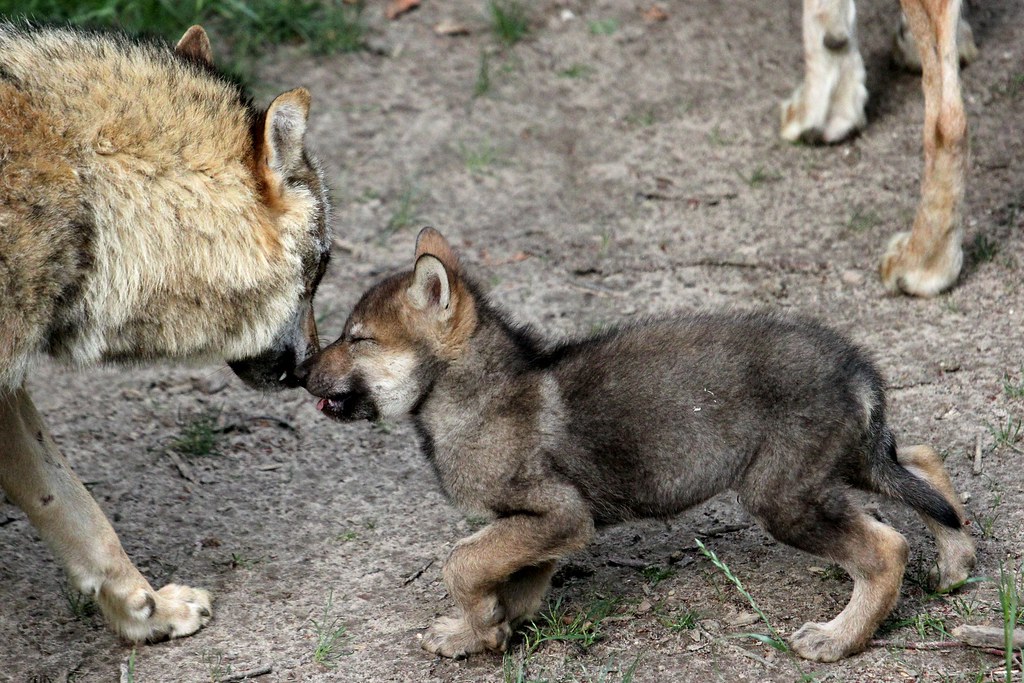10.3 Cooperative Breeding
You’ve probably heard the phrase, “It takes a village to raise a child.” That is cooperative breeding in a nutshell. In a species where cooperative breeding is common, extended relatives, and sometimes even unrelated individuals, help raise and care for young until they are of an independent age. Interestingly, few primate species involve both male and female investment – much less caregiving from an entire social group.
One of the most well-known cooperative breeding species is the wolf. While there was a time science thought wolf packs were the result of competition and intrasexual selection via territorial fights, data from the last two decades has shown us otherwise. Wolves live in family units, with a breeding pair, their offspring, and other extended members of the family as resources can support. In particularly large packs, there may be a secondary breeding pair. Together, multiple generations of wolves share offspring care to support the health and well-being of the entire pack.
In her seminal book, Mothers and Others: The Evolutionary Origins of Mutual Understanding, Sarah Blaffer Hrdy argues that humans are unique from most other primates. In fact, we are unique among all the great apes. In the first chapter, “Apes on a plane,” Hrdy muses over the idea that more than 150 unrelated apes can be in close proximity with relatively little conflict. This would not be the case in most of our kin – especially chimpanzees. From here, she begins to build her primary thesis – that humans are cooperative breeders.
Alloparenting
A key aspect of cooperative breeding is alloparental care, or alloparenting. Alloparents include anyone who is not a biological parent (mom or dad) that invests either direct or indirect care of offspring. This may come in the form of babysitting, as is common among Hadzabe. It may also be the sharing of food when a new infant joins the family and parents are home from work. Doctors who provide medical care, teachers who help children learn social skills, and grandparents who spend time sharing family stories are all alloparents in modern, human social groups.
Interestingly, humans are one of the few species who will invest alloparental care in offspring to whom they are not related. Alyssa Crittenden and Frank Marlowe investigated allomaternal care among the Hadzabe of Tanzania. (Allomothers include anyone who is not the biological mother – including the father.) They found that investment did not only come from individuals related to the child. Rather, women often exchange food and foraging efforts for childcare. That is, one woman may stay in the camp with the children and receive a share of the foods foraged by the other women. On the next day, these roles would be reversed.
How can this be? Doesn’t this directly contradict Hamilton’s Rule? Well, yes. However, because of our deep investment in cooperation and culture, humans have taken phenotypic matching and reciprocal exchange to an entirely new level. A concept we will discuss in more detail during the next chapter.

an intense form of cooperation, in which individuals help raise offspring that are not their own.
care provided by individuals other than biological parents; a universal behavior among humans that has shaped our evolutionary history and remains important in contemporary society.
care provided by anyone other than the biological mother. Unlike alloparenting (which sees the biological parents as one unit), allomaternal caregivers include the biological father as a member of the group who helps support the mother early in childrearing.

